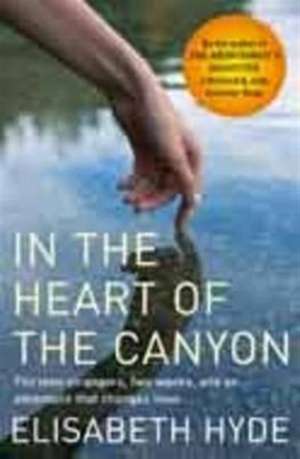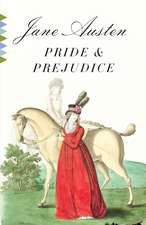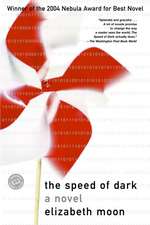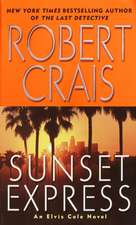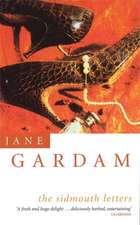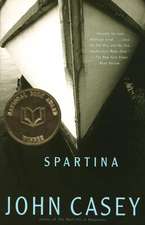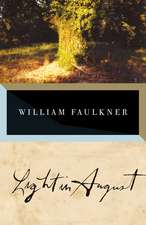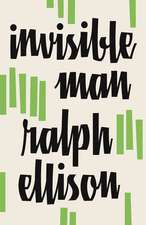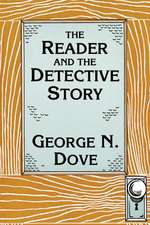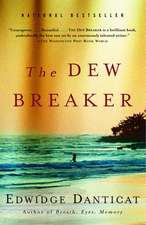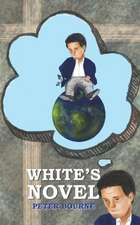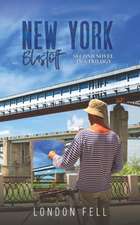In the Heart of the Canyon
Autor Elisabeth Hydeen Limba Engleză Paperback – 23 mai 2013
| Toate formatele și edițiile | Preț | Express |
|---|---|---|
| Paperback (2) | 84.78 lei 6-8 săpt. | |
| Vintage Books USA – 30 iun 2010 | 108.50 lei 3-5 săpt. | |
| MacMillan – 23 mai 2013 | 84.78 lei 6-8 săpt. |
Preț: 84.78 lei
Preț vechi: 98.06 lei
-14% Nou
Puncte Express: 127
Preț estimativ în valută:
16.23€ • 16.88$ • 13.60£
16.23€ • 16.88$ • 13.60£
Carte tipărită la comandă
Livrare economică 13-27 martie
Preluare comenzi: 021 569.72.76
Specificații
ISBN-13: 9780230772298
ISBN-10: 0230772293
Pagini: 338
Dimensiuni: 156 x 234 x 20 mm
Greutate: 0.58 kg
Editura: MacMillan
ISBN-10: 0230772293
Pagini: 338
Dimensiuni: 156 x 234 x 20 mm
Greutate: 0.58 kg
Editura: MacMillan
Notă biografică
Born and raised in New Hampshire, Elisabeth Hyde briefly practiced law for the Department of Justice in Washington, D.C. In 1982 she took time off to write her first novel, Her Native Colors, and never looked back. She has been awarded working scholarships to the Bread Loaf Writers Conference and teaches creative writing through artist-in-residence programs. Her fourth novel, The Abortionist's Daughter, was selected for the Richard & Judy Summer Read and became a UK bestseller. Pan are publishing Crazy as Chocolate in Spring 2007. Elisabeth lives in Boulder, Colorado with her husband and three children.
Extras
T H E G U E S T S
Peter Kramer, age twenty-seven, a cartographer from Cincinnati
Evelyn Burns, age fifty, a biology professor at Harvard University
The Frankels, from Evanston, Illinois
Ruth, age seventy-three, a painter
Lloyd, age seventy-six, a physician
The Van Dorens, from Mequon, Wisconsin
Susan, age forty-three, a guidance counselor
Amy, age seventeen
The Boyer-Brandts, from Green River, Wyoming
Mitchell, age fifty-nine, a devoted historian
Lena, age sixty, a kindergarten teacher
The Compsons, from Salt Lake City
Jill, age thirty-eight, a stay-at-home mom
Mark, age forty, a businessman
Matthew, age thirteen
Sam, age twelve
T H E G U I D E S
JT Maroney, Trip Leader, age fifty-two
Abo, the paddle captain, age thirty-five
Dixie Ann Gillis, age twenty-seven
PROLOGUE
Down in the heart of the canyon, in the bone-baking heat, they put their lives on hold.
Most of the travelers had never experienced anything quite like it. Peter Kramer, whose year mapping the jungles of Central America included a monthlong stay in an unair-conditioned hospital with a fever of 104, found it impossible to suck down more than short little
gasps of hot air. Evelyn Burns, professor of biology at Harvard University, spent the first day lecturing everyone about the tolerability of dry heat (105 in Arizona being nothing compared to 90 in Boston), then vomited five minutes into the first windstorm. Dr. and Mrs. Lloyd Frankel, river veterans, lay on their sleeping mats in stunned oblivion to the velvety orange wasps that scurried in blind circles on the hot
sand between them. And Amy Van Doren, who unbeknownst to her mother had weighed in at 237 pounds on the hotel spa scale the night
before the trip, rigorously shook the bottle of hot sauce over everything on her plate, for she knew that chile peppers made you sweat,
which in turn would not only cool her off but enable her to lose a few pounds.
JT, the head guide, had seen it all before. This being his 125th trip down the Colorado River, he’d witnessed time and again the universal
zombielike walk of his guests at the end of the day when they staggered up the beach in search of a campsite. He called it the Death
Walk and always reminded his fellow guides not to expect much volunteer help in the first few days of any July trip, as guests acclimated to the suffocating conditions of the Grand Canyon. It was simply a matter of physiology: the human body wasn’t designed to go from a comfortable air-conditioned existence to the prehistoric inferno of canyon life in a day. When his heat-stomped campers marveled at his energy, he kept at what he was doing and raised an eyebrow and said, “You’ll adjust.”
JT was a man of few words.
At night it was so hot you slept without a blanket, or even a sheet, for well past midnight the winds continued to fan the heat off the sun-baked canyon walls. In early morning, as people shook out their clothes for scorpions, the air could feel temperate, and they might be
fine in just a bathing suit; but as soon as the sun’s rays came barreling over the canyon walls, out came the long-sleeved cotton shirts, which got repeatedly dunked in the river, wrung out, and worn, soaked to chill, until sundown.
During the midday furnace, when even the guides crawled into whatever shade they could find and collectively dreamt of that first brisk morning in October when you could see your breath, JT himself would confront the heat head-on. Alone in his raft, he would kneel against the side tubes with his arms draped over the edge, staring in a kind of rapt hypnosis at the sheer walls across the river. Something in
the flat midday light, he’d found, caused them to eventually start floating upstream, a mirage of the mind until he blinked, and then they
would snap back into place until the next daze sent them floating upstream again. It was a game he played, a game he’d never reveal to
anyone lest they think him soft, or spiritual, or just plain wacky.
But in fact he was all three. JT Maroney’s heart was in those walls, and had been since his first trip thirty-five years ago when someone
handed him a life jacket and a paddle and said, “Are you coming or not?” It was in the polished maroon cliffs of Marble Canyon, the dusty
tan layers of Coconino sandstone; it was embedded forever in the shimmering black walls of the Inner Gorge, Land of the Giants. It was
in the scorpions and the velvet wasps and the stinging red ants that sent you running for a vial of ammonia; it was in the feathery tamarisk
trees and the canyon wrens’ falling notes and the grumpy blackwinged California condor he spotted without fail as they passed under Navajo Bridge the first day of every trip. It was in the tug of water around his ankle as he splashed about, rigging his boat; it was in the
sunlit droplets that danced above the roar of big water.
Each trip changed him a little. This trip would change him a lot. It would change everyone, in ways no one could have anticipated.
But on the Fourth of July, at the beginning of JT’s 125th trip, it wasn’t about change. It was about drinking beer and eating pie and dreaming up new ways to fly the Stars and Stripes over the grandest river in the West.
1
Lee’s Ferry
Mile 0
Up at Lee’s Ferry, the night before the trip, JT sat on the side tube of his eighteen-foot neoprene raft, popped open a beer, and tried to remember exactly how many times he’d flipped his raft in Hermit.
Deep in the Inner Gorge, ninety-five miles downstream, the runoff boulders from Hermit Creek collided with the Colorado River to create one of the longest hydraulic roller coasters in the canyon, wave after wave of foaming madness. The fifth wave, in particular, had a tendency to curl back upon itself, something that could easily flip a boat. JT’s goal was always to punch straight on through, aiming for just enough of a wild ride to give his passengers a thrill without actually flipping. Trouble was, sometimes the ride got ahead of itself, and JT hit that fifth wave with maybe too much weight in the back, and suddenly there they were, rising up, hovering in midair with water roaring all around and JT heaving his weight into the oars even as he felt them go back and over: down into the churning froth, getting maytagged and then popping up into the light, always disoriented until he spotted the white underside of his raft, which was usually right there beside him. And so it was, more than just a few times in his life as a guide, and although there were always a few who subsequently wanted off, now, what made it all worthwhile was seeing the expressions on the others’ faces as he hauled them up onto the upturned belly of his raft—expressions of shock, adrenaline, joy, fear, joy, excitement, and did he mention joy? Because that’s what it was, usually: the sheer exultation of surviving a swim in the most powerful river in the northern hemisphere.
JT tallied up the times he’d flipped. Five in all, if his memory served him well.
Draining his beer, he tossed the empty can onto a tarp on the beach and reached into the mesh drag bag for another. The sun was still high in the sky, the water a deep turtle green, achy cold if you left your foot in for more than a few seconds. Across the river, tan hills sloped up from the water’s edge, speckled with piñon and sage and juniper; downstream, salmon pink cliffs marked the beginning of Marble Canyon.
JT was the lead boatman for this trip, the Trip Leader, and as such he was the one who made all the important day-to-day decisions: where to stop for lunch, which hikes to take, whether they’d schedule a layover day. If there was a problem passenger, JT was responsible for reigning him in; if someone got hurt, JT decided whether to evacuate. JT figured he was good for two trips per season as lead boatman; you got paid a little more, but you never really slept.
Up on the beach, Dixie and Abo, his fellow guides, worked together stuffing tents one by one into a large rubberized bag. JT was tired and hungry and wished briefly that they were cooking him a good dinner instead. After a long morning spent loading up the truck back at the warehouse in Flagstaff, they’d driven the three hours to Lee’s Ferry, where they worked the entire afternoon rigging their boats in the hot desert sun. The beach at Lee’s Ferry was the only put-in point on the river, so it was crowded with people and boats: two fat motorized rafts, a dozen or so durable eighteen-footers, and a flotilla of colorful kayaks. The beach was littered with so much gear—dinged-up ammunition boxes, waterproof bags, paddles, oars, life jackets, water jugs—that it resembled a paddlers’ flea market. Yet despite the mayhem, everybody seemed to know what was what and whose was whose, and JT knew that by ten o’ clock tomorrow, all this gear would be stowed in its rightful place on the boats.
High in the sky, a turkey vulture slowly circled, its white-tipped wings spread wide. The people on the motor rig had set up lawn chairs and opened umbrellas for shade, but nobody was sitting down; there was too much work to be done, although they did it with a beer in hand. Up on the beach, Abo, his paddle captain, was mending a book with duct tape, while Dixie, who would be rowing their third boat, was assembling their picnic dinner. She wore a yellow bathing suit top and a blue sarong knotted low on her hips; wet braids curled at her shoulders.
“How come there are only five sandwiches?” she asked.
“Four for me, one for you and JT to split,” said Abo.
“Well, someone’s going hungry,” said Dixie, “and it isn’t going to be me.”
JT smiled to himself. He was glad to have these two for his crew. Abo, who could always be counted on to loosen up a group, was thirty-five, tall and bony-legged, with bleachy-tipped brown hair and clear blue eyes. Nobody knew his real name. He was a farm boy from the Midwest who’d come out to study geology at the University of Arizona, then took a river trip and never went back to school. During the winter, he built houses and scavenged work up at the ski area. Reputedly, he had a son by a woman in California, a movie producer whom Abo had met on an earlier trip. He was a good guide, in JT’s view; not only did he make people laugh, but as an amateur geologist he knew the pastry layers of the canyon better than anyone.
Dixie, whose real name was just that, Dixie Ann Gillis, was twenty-seven. She was relatively new with the company, and he’d only done one other trip with her, but he’d been impressed when he watched her rescue a private boater from the Rock Garden below Crystal Rapid. She had strong opinions about a lot of things, and JT liked that about her. If you caught him with his guard down, JT might admit that he was half in love with Dixie, but she had a boyfriend down in Tucson whose picture she kept taped to the inside of her personal ammo box, and JT wasn’t one to mess with somebody else’s good thing. Besides, after 124 trips, JT knew how things worked in the canyon, knew you could fall in love at the drop of a hat, literally, before you even got through Marble Canyon. It was a guide’s life to fall in love, he knew; he’d done his share, but if there was one thing he understood these days, it was to stand back and not get caught up in things, trip after trip after trip.
JT unlatched the ammo box by his feet and took out the passenger list and scanned the names and notes. They were supposed to have fourteen passengers on the trip, but at the last minute one couple had canceled, which meant he was going to have to juggle the seating arrangements to balance out the boats. There were two vegetarians, three “no dairy,” one “high craving for red meat.” Most had no rafting experience, which didn’t surprise him; but one couldn’t swim, which did. There were two kids, which pleased him; kids usually brought a goofy spirit absent in adults, who too easily fell victim to excessive reverence for natural wonders. He made a mental note to assign the boys a job—can-smasher, maybe—so they could feel useful and independent from their parents.
He continued scanning. There was a couple from Wyoming, named Mitchell and Lena; Lena, he noted, was allergic to peanuts, furry animals, grasses, and pollen. Well, hopefully she was bringing along a box of Benadryl and an EpiPen or two. There was a mother and daughter, Susan and Amy. The one who couldn’t swim was a young man from Ohio named Peter, age twenty-seven, traveling solo.
Noting Peter’s age, JT glanced up at Dixie, who was reknotting her sarong. Don’t even think of it, he heard himself telling Peter. Don’t even try.
That evening, as the sky grew dark, boaters from all the groups gathered together and passed around a bottle of whiskey, sharing old stories, inventing new ones. Around nine thirty, JT, who’d passed on the second round, returned to his raft. He brushed his teeth, then unrolled his sleeping bag across the long, flat meat cooler that spanned the center of his boat. Even though it was dark, the day’s heat continued to radiate off the canyon walls. JT strapped on his headlamp and sat down and carefully and methodically dried off his feet. He rubbed them well with bee balm, then pulled on a pair of clean socks to keep his skin from cracking. Finally he stretched out on top of his sleeping bag. He settled back and locked his hands behind his head and gazed up at the spattered current of stars above. A warm breeze fanned his skin, and he picked out constellations: the Big Dipper, Cassiopeia, the busy little Pleiades.
Up on the beach, a burst of laughter erupted from the revelers, but by now his eyes had begun to twitch and blur. He fought to keep them open, to watch just a little bit more of the star show, but within minutes he was fast asleep.
From the Hardcover edition.
Peter Kramer, age twenty-seven, a cartographer from Cincinnati
Evelyn Burns, age fifty, a biology professor at Harvard University
The Frankels, from Evanston, Illinois
Ruth, age seventy-three, a painter
Lloyd, age seventy-six, a physician
The Van Dorens, from Mequon, Wisconsin
Susan, age forty-three, a guidance counselor
Amy, age seventeen
The Boyer-Brandts, from Green River, Wyoming
Mitchell, age fifty-nine, a devoted historian
Lena, age sixty, a kindergarten teacher
The Compsons, from Salt Lake City
Jill, age thirty-eight, a stay-at-home mom
Mark, age forty, a businessman
Matthew, age thirteen
Sam, age twelve
T H E G U I D E S
JT Maroney, Trip Leader, age fifty-two
Abo, the paddle captain, age thirty-five
Dixie Ann Gillis, age twenty-seven
PROLOGUE
Down in the heart of the canyon, in the bone-baking heat, they put their lives on hold.
Most of the travelers had never experienced anything quite like it. Peter Kramer, whose year mapping the jungles of Central America included a monthlong stay in an unair-conditioned hospital with a fever of 104, found it impossible to suck down more than short little
gasps of hot air. Evelyn Burns, professor of biology at Harvard University, spent the first day lecturing everyone about the tolerability of dry heat (105 in Arizona being nothing compared to 90 in Boston), then vomited five minutes into the first windstorm. Dr. and Mrs. Lloyd Frankel, river veterans, lay on their sleeping mats in stunned oblivion to the velvety orange wasps that scurried in blind circles on the hot
sand between them. And Amy Van Doren, who unbeknownst to her mother had weighed in at 237 pounds on the hotel spa scale the night
before the trip, rigorously shook the bottle of hot sauce over everything on her plate, for she knew that chile peppers made you sweat,
which in turn would not only cool her off but enable her to lose a few pounds.
JT, the head guide, had seen it all before. This being his 125th trip down the Colorado River, he’d witnessed time and again the universal
zombielike walk of his guests at the end of the day when they staggered up the beach in search of a campsite. He called it the Death
Walk and always reminded his fellow guides not to expect much volunteer help in the first few days of any July trip, as guests acclimated to the suffocating conditions of the Grand Canyon. It was simply a matter of physiology: the human body wasn’t designed to go from a comfortable air-conditioned existence to the prehistoric inferno of canyon life in a day. When his heat-stomped campers marveled at his energy, he kept at what he was doing and raised an eyebrow and said, “You’ll adjust.”
JT was a man of few words.
At night it was so hot you slept without a blanket, or even a sheet, for well past midnight the winds continued to fan the heat off the sun-baked canyon walls. In early morning, as people shook out their clothes for scorpions, the air could feel temperate, and they might be
fine in just a bathing suit; but as soon as the sun’s rays came barreling over the canyon walls, out came the long-sleeved cotton shirts, which got repeatedly dunked in the river, wrung out, and worn, soaked to chill, until sundown.
During the midday furnace, when even the guides crawled into whatever shade they could find and collectively dreamt of that first brisk morning in October when you could see your breath, JT himself would confront the heat head-on. Alone in his raft, he would kneel against the side tubes with his arms draped over the edge, staring in a kind of rapt hypnosis at the sheer walls across the river. Something in
the flat midday light, he’d found, caused them to eventually start floating upstream, a mirage of the mind until he blinked, and then they
would snap back into place until the next daze sent them floating upstream again. It was a game he played, a game he’d never reveal to
anyone lest they think him soft, or spiritual, or just plain wacky.
But in fact he was all three. JT Maroney’s heart was in those walls, and had been since his first trip thirty-five years ago when someone
handed him a life jacket and a paddle and said, “Are you coming or not?” It was in the polished maroon cliffs of Marble Canyon, the dusty
tan layers of Coconino sandstone; it was embedded forever in the shimmering black walls of the Inner Gorge, Land of the Giants. It was
in the scorpions and the velvet wasps and the stinging red ants that sent you running for a vial of ammonia; it was in the feathery tamarisk
trees and the canyon wrens’ falling notes and the grumpy blackwinged California condor he spotted without fail as they passed under Navajo Bridge the first day of every trip. It was in the tug of water around his ankle as he splashed about, rigging his boat; it was in the
sunlit droplets that danced above the roar of big water.
Each trip changed him a little. This trip would change him a lot. It would change everyone, in ways no one could have anticipated.
But on the Fourth of July, at the beginning of JT’s 125th trip, it wasn’t about change. It was about drinking beer and eating pie and dreaming up new ways to fly the Stars and Stripes over the grandest river in the West.
1
Lee’s Ferry
Mile 0
Up at Lee’s Ferry, the night before the trip, JT sat on the side tube of his eighteen-foot neoprene raft, popped open a beer, and tried to remember exactly how many times he’d flipped his raft in Hermit.
Deep in the Inner Gorge, ninety-five miles downstream, the runoff boulders from Hermit Creek collided with the Colorado River to create one of the longest hydraulic roller coasters in the canyon, wave after wave of foaming madness. The fifth wave, in particular, had a tendency to curl back upon itself, something that could easily flip a boat. JT’s goal was always to punch straight on through, aiming for just enough of a wild ride to give his passengers a thrill without actually flipping. Trouble was, sometimes the ride got ahead of itself, and JT hit that fifth wave with maybe too much weight in the back, and suddenly there they were, rising up, hovering in midair with water roaring all around and JT heaving his weight into the oars even as he felt them go back and over: down into the churning froth, getting maytagged and then popping up into the light, always disoriented until he spotted the white underside of his raft, which was usually right there beside him. And so it was, more than just a few times in his life as a guide, and although there were always a few who subsequently wanted off, now, what made it all worthwhile was seeing the expressions on the others’ faces as he hauled them up onto the upturned belly of his raft—expressions of shock, adrenaline, joy, fear, joy, excitement, and did he mention joy? Because that’s what it was, usually: the sheer exultation of surviving a swim in the most powerful river in the northern hemisphere.
JT tallied up the times he’d flipped. Five in all, if his memory served him well.
Draining his beer, he tossed the empty can onto a tarp on the beach and reached into the mesh drag bag for another. The sun was still high in the sky, the water a deep turtle green, achy cold if you left your foot in for more than a few seconds. Across the river, tan hills sloped up from the water’s edge, speckled with piñon and sage and juniper; downstream, salmon pink cliffs marked the beginning of Marble Canyon.
JT was the lead boatman for this trip, the Trip Leader, and as such he was the one who made all the important day-to-day decisions: where to stop for lunch, which hikes to take, whether they’d schedule a layover day. If there was a problem passenger, JT was responsible for reigning him in; if someone got hurt, JT decided whether to evacuate. JT figured he was good for two trips per season as lead boatman; you got paid a little more, but you never really slept.
Up on the beach, Dixie and Abo, his fellow guides, worked together stuffing tents one by one into a large rubberized bag. JT was tired and hungry and wished briefly that they were cooking him a good dinner instead. After a long morning spent loading up the truck back at the warehouse in Flagstaff, they’d driven the three hours to Lee’s Ferry, where they worked the entire afternoon rigging their boats in the hot desert sun. The beach at Lee’s Ferry was the only put-in point on the river, so it was crowded with people and boats: two fat motorized rafts, a dozen or so durable eighteen-footers, and a flotilla of colorful kayaks. The beach was littered with so much gear—dinged-up ammunition boxes, waterproof bags, paddles, oars, life jackets, water jugs—that it resembled a paddlers’ flea market. Yet despite the mayhem, everybody seemed to know what was what and whose was whose, and JT knew that by ten o’ clock tomorrow, all this gear would be stowed in its rightful place on the boats.
High in the sky, a turkey vulture slowly circled, its white-tipped wings spread wide. The people on the motor rig had set up lawn chairs and opened umbrellas for shade, but nobody was sitting down; there was too much work to be done, although they did it with a beer in hand. Up on the beach, Abo, his paddle captain, was mending a book with duct tape, while Dixie, who would be rowing their third boat, was assembling their picnic dinner. She wore a yellow bathing suit top and a blue sarong knotted low on her hips; wet braids curled at her shoulders.
“How come there are only five sandwiches?” she asked.
“Four for me, one for you and JT to split,” said Abo.
“Well, someone’s going hungry,” said Dixie, “and it isn’t going to be me.”
JT smiled to himself. He was glad to have these two for his crew. Abo, who could always be counted on to loosen up a group, was thirty-five, tall and bony-legged, with bleachy-tipped brown hair and clear blue eyes. Nobody knew his real name. He was a farm boy from the Midwest who’d come out to study geology at the University of Arizona, then took a river trip and never went back to school. During the winter, he built houses and scavenged work up at the ski area. Reputedly, he had a son by a woman in California, a movie producer whom Abo had met on an earlier trip. He was a good guide, in JT’s view; not only did he make people laugh, but as an amateur geologist he knew the pastry layers of the canyon better than anyone.
Dixie, whose real name was just that, Dixie Ann Gillis, was twenty-seven. She was relatively new with the company, and he’d only done one other trip with her, but he’d been impressed when he watched her rescue a private boater from the Rock Garden below Crystal Rapid. She had strong opinions about a lot of things, and JT liked that about her. If you caught him with his guard down, JT might admit that he was half in love with Dixie, but she had a boyfriend down in Tucson whose picture she kept taped to the inside of her personal ammo box, and JT wasn’t one to mess with somebody else’s good thing. Besides, after 124 trips, JT knew how things worked in the canyon, knew you could fall in love at the drop of a hat, literally, before you even got through Marble Canyon. It was a guide’s life to fall in love, he knew; he’d done his share, but if there was one thing he understood these days, it was to stand back and not get caught up in things, trip after trip after trip.
JT unlatched the ammo box by his feet and took out the passenger list and scanned the names and notes. They were supposed to have fourteen passengers on the trip, but at the last minute one couple had canceled, which meant he was going to have to juggle the seating arrangements to balance out the boats. There were two vegetarians, three “no dairy,” one “high craving for red meat.” Most had no rafting experience, which didn’t surprise him; but one couldn’t swim, which did. There were two kids, which pleased him; kids usually brought a goofy spirit absent in adults, who too easily fell victim to excessive reverence for natural wonders. He made a mental note to assign the boys a job—can-smasher, maybe—so they could feel useful and independent from their parents.
He continued scanning. There was a couple from Wyoming, named Mitchell and Lena; Lena, he noted, was allergic to peanuts, furry animals, grasses, and pollen. Well, hopefully she was bringing along a box of Benadryl and an EpiPen or two. There was a mother and daughter, Susan and Amy. The one who couldn’t swim was a young man from Ohio named Peter, age twenty-seven, traveling solo.
Noting Peter’s age, JT glanced up at Dixie, who was reknotting her sarong. Don’t even think of it, he heard himself telling Peter. Don’t even try.
That evening, as the sky grew dark, boaters from all the groups gathered together and passed around a bottle of whiskey, sharing old stories, inventing new ones. Around nine thirty, JT, who’d passed on the second round, returned to his raft. He brushed his teeth, then unrolled his sleeping bag across the long, flat meat cooler that spanned the center of his boat. Even though it was dark, the day’s heat continued to radiate off the canyon walls. JT strapped on his headlamp and sat down and carefully and methodically dried off his feet. He rubbed them well with bee balm, then pulled on a pair of clean socks to keep his skin from cracking. Finally he stretched out on top of his sleeping bag. He settled back and locked his hands behind his head and gazed up at the spattered current of stars above. A warm breeze fanned his skin, and he picked out constellations: the Big Dipper, Cassiopeia, the busy little Pleiades.
Up on the beach, a burst of laughter erupted from the revelers, but by now his eyes had begun to twitch and blur. He fought to keep them open, to watch just a little bit more of the star show, but within minutes he was fast asleep.
From the Hardcover edition.
Recenzii
“[An] incredible journey. . . . Hyde paddles us through . . . [while] her characters open up to one another and to themselves.”
—The New York Times Book Review
“An excellent armchair adventure. . . . Hyde vividly portrays both the wonders and horrors of white-water rafting.”
—The Boston Globe
“A near perfect blend of humor and drama, heartbreak and redemption.”
—The Dallas Morning News
“Hyde has a keen eye for social dynamics, but she’s just as good at keeping the adrenaline pumping. . . . She expertly evokes the thrill and terror of rapid-running. . . . A bracing ride.”
—People
“A fast-paced trip down the Colorado River. . . . Hyde hints at adventure around every bend in the river . . . and she delivers. . . . The book is a pleasing mix of travelogue and psychological exploration.”
—Seattle Times
“A poignant, first-rate story.”
—The Denver Post
“Hyde scores a bull’s-eye with her fifth novel. . . . An engrossing, evocative study of human behavior, especially under duress. . . . A great read for hot summer days and cool nights.”
—The Durango Herald (Colorado)
“An astute, engrossing, character-driven affair. . . . The novel succeeds as both a study of strangers striving toward a common goal and as a suspenseful drama filled with angst and humanity. Hyde outshines herself with this wild ride.”
—Publishers Weekly (starred review)
“Hyde writes with subtle humor and with such expertise that readers will feel as if they’re in the raft with her. . . . In this book, it’s not the finale that will win you. It’s the journey.”
—The Arizona Republic
“There’s nothing predictable about either Hyde’s plot or her searing conclusion.”
—Entertainment Weekly
“Hyde writes evocatively. . . . Her sense of place and descriptive ability are as bright as the Arizona sun.”
—Houston Chronicle
“Realistically suspenseful. . . . In the Heart of the Canyon is perfect summer reading.”
—The Columbus Dispatch (Ohio)
“Many things can happen on those wild-river trips, things that novelists manage to turn into great fiction. Here’s a new twist on the scenario . . . a ride below the Grand Canyon that promises adventure aplenty.”
—Pittsburgh Post-Gazette
“The group dynamics on a trip like this are fascinating, and the book is another winner.”
—The Toronto Sun
“Beach reads abound, but few are as well written as In the Heart of the Canyon. . . . Think romantic trysts and a seismic surprise—[it] will hold you rapt.”
—Self Magazine
“It is unlikely you will soon forget your traveling companions.”
—Newark Star-Ledger
“This finely wrought page-turner will keep you on a wild ride for all 226 miles. You won’t want to put it down.”
—Page Lambert, author of In Search of Kinship
—The New York Times Book Review
“An excellent armchair adventure. . . . Hyde vividly portrays both the wonders and horrors of white-water rafting.”
—The Boston Globe
“A near perfect blend of humor and drama, heartbreak and redemption.”
—The Dallas Morning News
“Hyde has a keen eye for social dynamics, but she’s just as good at keeping the adrenaline pumping. . . . She expertly evokes the thrill and terror of rapid-running. . . . A bracing ride.”
—People
“A fast-paced trip down the Colorado River. . . . Hyde hints at adventure around every bend in the river . . . and she delivers. . . . The book is a pleasing mix of travelogue and psychological exploration.”
—Seattle Times
“A poignant, first-rate story.”
—The Denver Post
“Hyde scores a bull’s-eye with her fifth novel. . . . An engrossing, evocative study of human behavior, especially under duress. . . . A great read for hot summer days and cool nights.”
—The Durango Herald (Colorado)
“An astute, engrossing, character-driven affair. . . . The novel succeeds as both a study of strangers striving toward a common goal and as a suspenseful drama filled with angst and humanity. Hyde outshines herself with this wild ride.”
—Publishers Weekly (starred review)
“Hyde writes with subtle humor and with such expertise that readers will feel as if they’re in the raft with her. . . . In this book, it’s not the finale that will win you. It’s the journey.”
—The Arizona Republic
“There’s nothing predictable about either Hyde’s plot or her searing conclusion.”
—Entertainment Weekly
“Hyde writes evocatively. . . . Her sense of place and descriptive ability are as bright as the Arizona sun.”
—Houston Chronicle
“Realistically suspenseful. . . . In the Heart of the Canyon is perfect summer reading.”
—The Columbus Dispatch (Ohio)
“Many things can happen on those wild-river trips, things that novelists manage to turn into great fiction. Here’s a new twist on the scenario . . . a ride below the Grand Canyon that promises adventure aplenty.”
—Pittsburgh Post-Gazette
“The group dynamics on a trip like this are fascinating, and the book is another winner.”
—The Toronto Sun
“Beach reads abound, but few are as well written as In the Heart of the Canyon. . . . Think romantic trysts and a seismic surprise—[it] will hold you rapt.”
—Self Magazine
“It is unlikely you will soon forget your traveling companions.”
—Newark Star-Ledger
“This finely wrought page-turner will keep you on a wild ride for all 226 miles. You won’t want to put it down.”
—Page Lambert, author of In Search of Kinship
